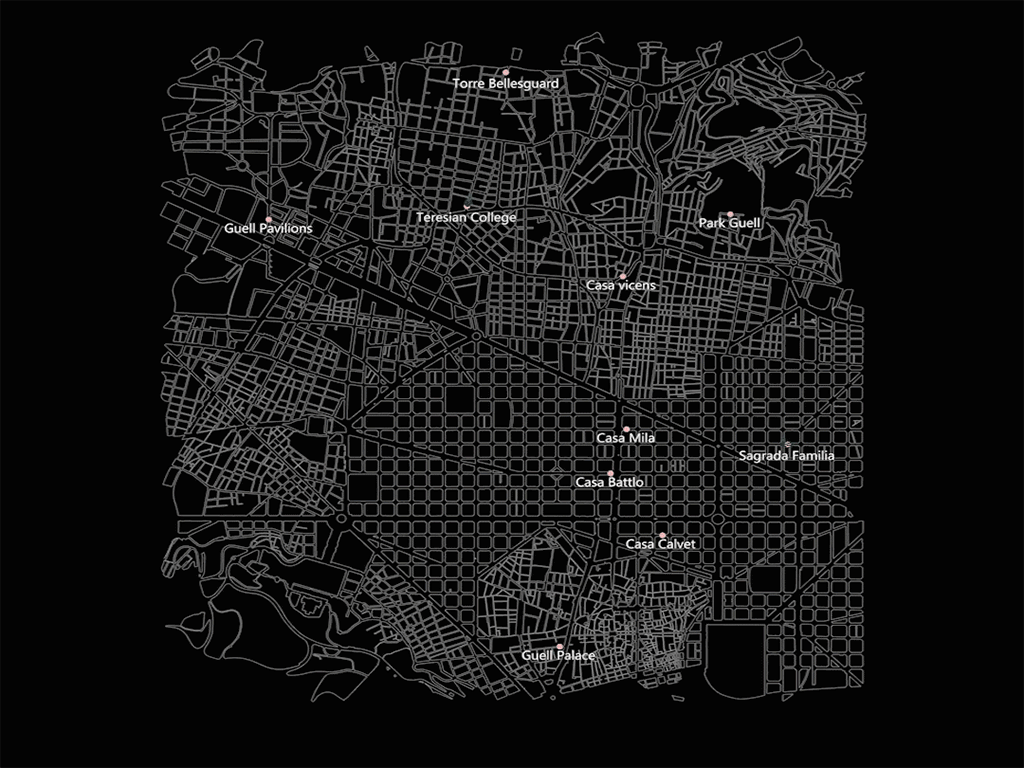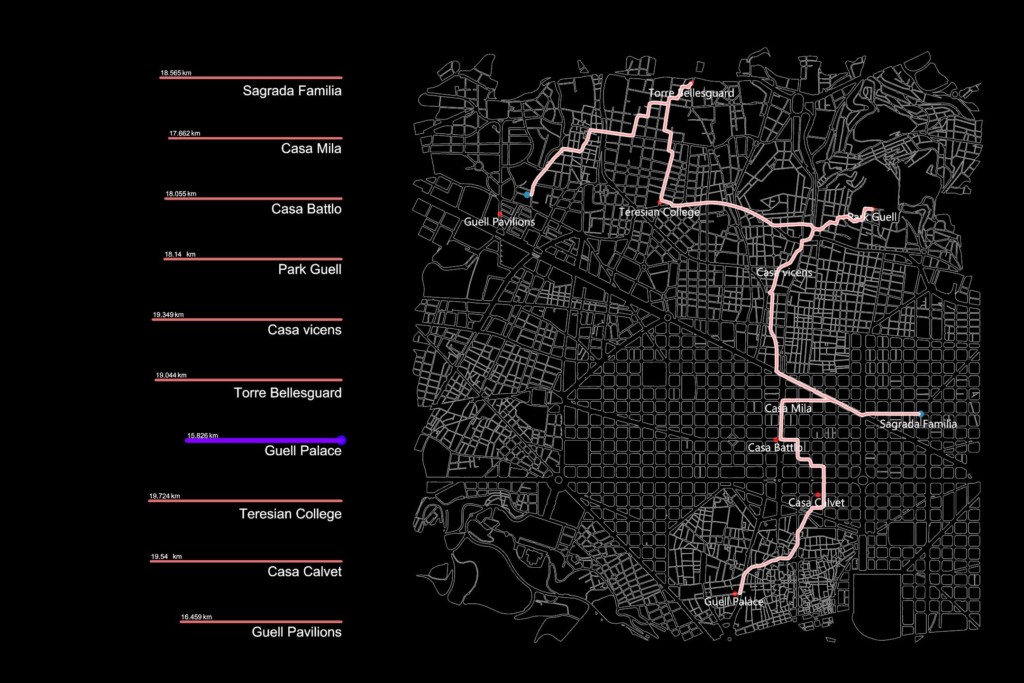SAY ‘GAUDI!’
ABSTRACT

This project is a personal adventure into mapping Gaudi. The Idea behind the project is to visit 10 buildings in Barcelona built by Architect Antoni Gaudi on a bicycle. The objective is to find a way to navigate this journey in the most efficient manner in terms of time and overall distance covered. Adopting the ‘Shortest Walk’ analysis tool for cycling paths, the study illustrates a comparative analysis of all possible scenarios of visiting each building starting with either one of the ten and effectively communicates the best possible starting point, one with the shortest overall bicycle journey. The buildings covered in this project are Sagrada Familia, Casa Mila, Casa Batllo, Park Guell, Casa Vicens, Torre Bellesguard, Guell Palace, Teresian College, Casa Calvet and Guell Pavilions.
PSEUDOCODE

STUDY 1: FAMILIA EN EL CENTRO (Family at the center)
The first study presents to us a case of mediation from one point: SAGRADA LA FAMILIA. The tool is programmed to visualize the shortest bicycle path to reach all 10 Gaudi buildings from Sagrada la familia. The visualization catalogues distance as an output. This inturn drives decision making for the user. Most Barcelona trips start at the Sagrada and this tool helps effectively mediate users to the next nearest attraction. However, the limitation with the study here was that it did not give us the shortest bicycle path across all 10 buildings progressively. This problem was tackled in the next study.
STUDY 2: EL BUCLE DE GAUDÍ (The Gaudi loop) 
The second study presents to us the catalogue of all possible shortest bicycle paths encompassing the multiple journeys of the 10 buildings depending on the starting point. Furthermore, it carries forward the shortest bicycle path analysis and presents new possibilities of mediating the city whilst looking for Gaudi. The analysis aids in the visualizing journey loops. These loops, coupled with the data on distances covered can help determine a great starting point for this (efficient) journey of discovery. 
Our processing illustrates that in order to cover the 10 buildings with the shortest possible journey time, Guell Palace would serve to be an ideal starting point, making the overall distance covered between the remaining buildings 15.82kms.
CONCLUSION
This study could easily extend into an application-like interface for tourists, architects, artists and students. The tool can serve to be an itinerary, guiding the user through the attractions in a curated fashion, focused on travel efficiency. Furthermore, users could pick places of their own interest and visualize their own journeys across multiple points of interest, with the knowledge of the best starting point for their selection of spaces. This tool with some additional modifications and data integration could help mediate journeys across multiple tourist destinations in multiple cities, like a micro-mobility mediator.
POTENTIAL
Shortest walk gives us the shortest distance between any two points. This exercise can be repeated to find out the overall shortest walk between a set of multiple points. However, this can be different from the shortest overall journey. Sometimes, it’s better to avoid certain points within a shorter distance to achieve an overall shorter journey. This particular problem can be analyzed using the grasshopper plug-in ‘Galapagos’ to further strengthen certain aspects of mapping new journeys.
DATA SOURCE
Open Data BCN
Say ‘Gaudi!’ is a project of IAAC, Institute for Advanced Architecture of Catalonia developed in the Master in City & Technology 2021/22 by Student: Pushkar Runwal and Faculty: Eugenio Bettucchi and Iacopo Neri